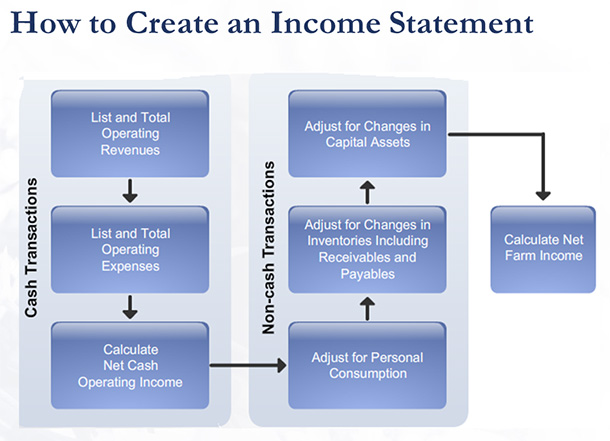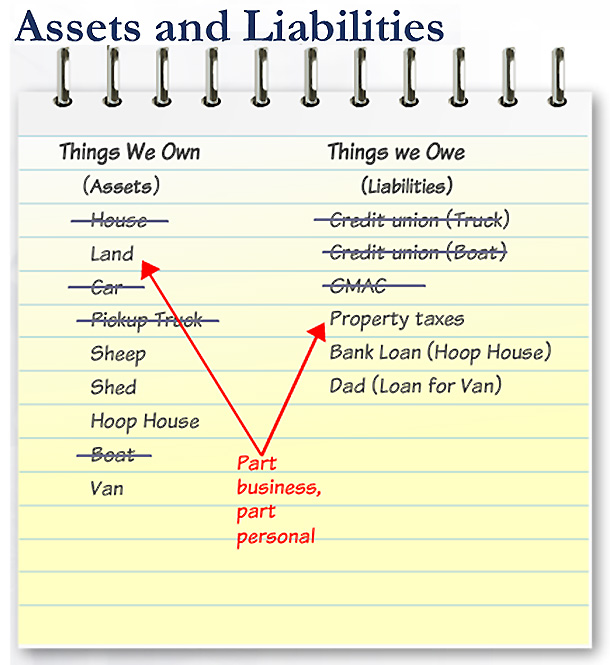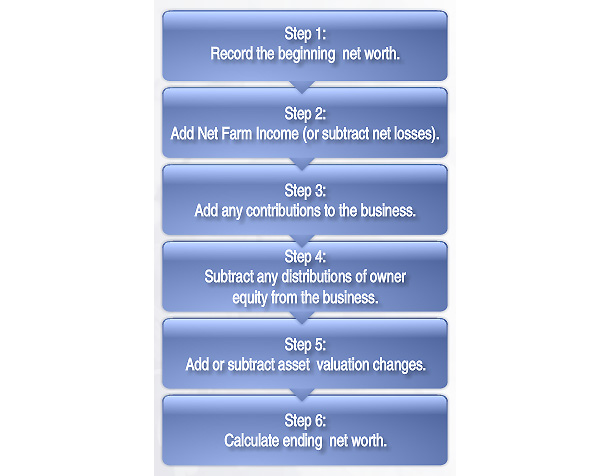Constructing accurate financial statements for your farm or ranch business is one of the basic steps for management success.
These statements often hold the key to identifying problems and risks before they become severe, as well as helping to recognize opportunities as they arise. Financial statements, like many other management functions, are complex and often require further explanation than what can be covered in a short article or presentation. Hence, the RightRisk Education Team has worked to create and publish free online courses to cover important risk-management concepts.
The “Getting on Track: Better Management Through Basic Financial Statements” course highlights several examples on how to assemble and understand financial statements. The course is divided into segments highlighting each statement and what information is required.
1. Cash-flow statement
A cash-flow statement shows farm business sources and uses of cash, both total income and expenses, and monthly inflows and outflows.
The course outlines two types of cash statements: historical – actual data from past periods – and projected – constructed from predictions of inflows and outflows. Generating a projected cash-flow statement is important to understand when cash shortfalls might occur and how they might be addressed, making it an important tool for borrowers and lenders. The course includes a downloadable template and instructions for building your own cash-flow statement.
2. Balance sheet
A balance sheet lists all the assets and liabilities and subsequent net worth (asset values minus liabilities) of the owner. The balance sheet is important to lenders because it provides estimated values at a point in time and can supply a measure of business performance over time. The course discusses how to classify assets and liabilities (current, long-term or other) and how to value them.
In general, there are two methods to estimate asset values: book value or market value. Book value estimates the value of an asset based on the cost of acquiring the asset (purchase price, plus any additional costs such as shipping, handling or insurance) minus depreciation. Depreciation is the reduction of an asset’s value over its useful life due to use, age and obsolescence. The purpose of this process is to provide information on the asset’s current value to calculate business expenses. There are many different methods for calculating depreciation. Market value estimates asset value based on the price at which the asset could be sold today.
You might ask, “How do I know which method to use to value the assets on my balance sheet?” Market valuation of business assets better represents the current market worth of the business owner. For this reason, lenders want to see market values for assets when making lending decisions. Book valuation provides a better analysis of business performance. The book value separates business growth from value increases caused by changes in asset values. Book values are also used to determine the taxable gain when an asset is sold.

3. Income statement
The accrual income statement provides an accurate measure of profitability for any business. The course lays out a seven-step process for building an income statement and properly estimating net income. The flow chart shows the process, starting with estimating net cash income from operating expenses and revenue. Accounting for non-cash transactions, such as changes in asset values and inventory variations, is the next step in the process. Net farm income can then be estimated after adjusting for personal consumption.
4. Statement of owner equity
The statement of owner equity is the last financial statement discussed in the course. The statement reveals how equity or net worth changes between two balance sheets. This information is helpful to understand what financial events caused net worth to change over time. The course outlines a six-step process to complete a statement of owner equity.
Next step to better management
With completed financial statements in hand, you are ready to move on to more in-depth analysis of your farm or ranch business, including enterprise and whole farm analysis. These approaches allow you to better analyze and evaluate your use of resources and address problems that may arise as you move forward. The third “Getting on Track” course focuses on explaining financial performance. ![]()
The RightRisk Education Team is comprised of researchers and extension specialists with the mission of developing innovative and effective extension education programs for ranchers and farmers.

-
John Hewlett
- University of Wyoming
- Email John Hewlett
Jeff Tranel is at Colorado State University. Email Jeff Tranel.
Jay Parsons is at the University of Nebraska – Lincoln. Email Jay Parsons.










